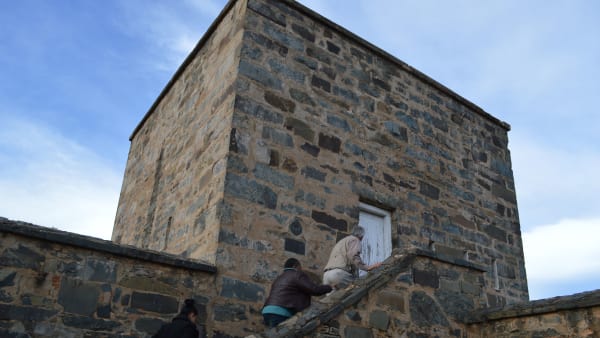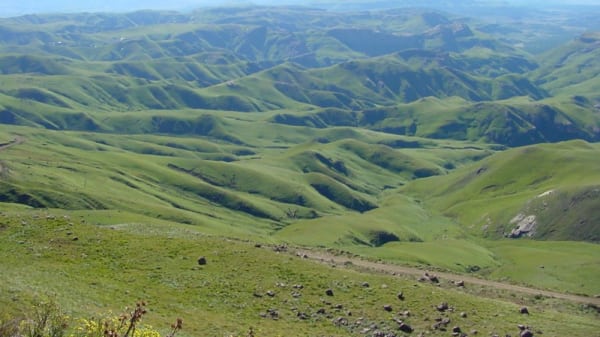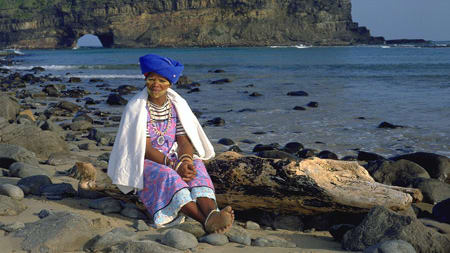The Eastern Cape sits on the eastern coast of South Africa, where it is ideally positioned between the Western Cape and KwaZulu Natal. The Northern Cape, Free State and the mountain kingdom of Lesotho wrap around its northern borders. With an area of nearly 167 000 square kilometres (about the size of Florida or Uruguay) and a population of 6.5 million, this is the second largest province in South Africa and the third largest in terms of population. However, the majority of the population lives in the cities or works in other provinces, leaving huge stretches of open spaces where you can feel like you are the only person on earth.
The Eastern Cape is considered the poorest of South Africa’s nine provinces.
The capital is Bhisho, which was also the capital of the independent homeland, Ciskei, during the apartheid era. Bhisho, however, is tiny and only Port Elizabeth and East London can really be considered cities.
Both Port Elizabeth and East London are major sea ports for South Africa, and are home to many car manufacturers such as Mercedes Benz, Volkswagen and Audi.
isiXhosa is the most commonly spoken language but, with the exception of a few in the deeply rural areas, most speak some English.
It’s more a question of “Why not go”? The rolling hills and pristine beaches of the Wild Coast offer some of the best hiking, surfing and horse riding experiences in the country. The Wild Coast has been virtually untouched for centuries, and offers quaint little seaside towns, traditional amaXhosa homesteads, spectacular coastlines and indigenous forests.
The open plains of the Camdeboo region boasts nearly 20 000 hectare of National Park, including the Valley of Desolation, where you have spectacular views of the open Karoo as well as the picturesque town of Graaff-Reinet.
And let’s not forget the Big Seven! The Addo Elephant Park is the only park in the world where you can see the traditional Big Five as well as Great White Sharks and Southern Right Whales! It is also the third largest park in South Africa, has the world’s largest breeding colony of Cape Gannets and the second largest colony of African Penguins.
The Tsitsikamma region boasts fantastic natural beauty due to its large tracts of indigenous forests and deep river gorges that flow into the sea. The word Tsitsikamma, is a Khoi word meaning “place of abundant or sparkling water”. “Coca Cola” coloured water flows through lush forests and down to the crashing waves of the Indian Ocean. This is where adrenalin junkies really come into their own. Who can resist a zipline tour over gorges and waterfalls, great abseiling, the world’s highest commercial bungy jump, treetop canopy tours and many water activities on the Storms River? Not for the faint-hearted, to say the least. For those of us who enjoy something with a little less adrenalin (or terror), the hiking is phenomenal and Tsitsikamma is the starting point of the famous Otter Trail.
For dense forests, misty mountains and fascinating rock formations, you can’t go wrong with the Amathola region. The name, Amathola means “calves” in isiZhosa and is thought to refer to the mountains as the “calves” of the bigger Drakensberg range nearby. A magnificent mountain-pass takes you through the Amathola Mountains to the eccentric village of Hogsback. It is claimed that the misty forests, waterfalls, mountains and valleys were the inspiration for Middle Earth in JRR Tolkien’s Lord of the Rings trilogy.
Before we start, it’s probably important to put a disclaimer on this section. We are not historians, but have sourced this information elsewhere. As so often happens with history, some details might be disputed, but this section is only intended to give you an idea into the Eastern Cape’s history and how it developed its own unique personality. There is plenty information available elsewhere for the history buffs.
Early History
The Eastern Cape has probably one of the most interesting and complex histories of all of the South African provinces. In order to get a full understanding, we need to go back some 2 500 years, when the San lived in the northern parts of present-day Botswana. Their descendants ultimately split into the hunter-gatherer San people and the Khoi (or KhoiKhoi), who lived a pastoralist existence. The Khoi migrated further south, and by 1600 lived mostly along the southwest coast of the Cape, extending into parts of the eastern Cape. The terms San and Khoi are often confused, and sometimes a generic (though, in essence, incorrect) term KhoiSan is found.
At approximately the same time, people had moved south from Central Africa and crossed the Limpopo River. This group ultimately broke up into an inland group termed the Sotho-Tswana, and the Nguni group, which occupied the coastal plains. This group ultimately split into a number of smaller groups including the amaZulu in what is now KwaZulu Natal and the amaXhosa in the eastern Cape.
European settlers first arrived in 1652, when Jan van Riebeeck of the Dutch East India Company was tasked to establish a supply station for Dutch trading fleets on their way to the East. This was the start of a formal settlement in Cape Town. Five years’ later, the first Dutch East India Company men were released from service to farm. They started an influx of European farmers (mainly Dutch, German and French, who ultimately became known as the “Boers”, the word meaning farmer in Dutch). As a result, the settler community expanded from the Cape Colony into other parts of South Africa.
In 1795, the British seized the Cape from the Dutch East India Company, returned control to the Dutch government in 1803 and then decided to take it back again at the beginning of the Napoleonic Wars.
So at this point, time for a recap….
We have the Khoi living along the south west coast, we have the amaXhosa moving south away from the Zulu’s, the English colonising the Cape and the Boers extending away inland to get away from the English. Hands up, who thinks this might result in a war or two?
The Odd Squirmish
Until the First Frontier War, intermittent skirmishes broke out between various parties, mostly arguing over livestock and land rights. Initially, these were between the Europeans and the Khoi, when the Khoi would attack with poison arrows and steal their cattle. Things really started hotting up when the frontier farmers met the Xhosa in the vicinity of Great Fish River.
The Frontier Wars
This would take an entire text book to explain (and of course, that’s without the differences of opinion). So, in the interests of keeping it short – there were nine Frontier Wars between 1779 and 1878. For history buffs, this makes for fascinating reading and information abounds on the Web. For the rest of us, there are still some interesting forts, monuments, museums and other historical building and places dotted around the province - mainly around what has been named “Frontier Country” with the town of Grahamstown at its heart.
The Anglo-Boer Wars
The First Anglo-Boer War, also known as the First Transvaal War of Independence, was fought from December 1880 until March 1881 between the British and self-declared independent Transvaal and Orange Free State republics. This war took place further north than the Eastern Cape, so we won’t delve into it any further here.
The Second Anglo-Boer War (also known as the South African War) was much bigger and ran from October 1899 until May 1902. Troops from several regions of the British Empire came to fight against the Boer Republics. After a brutal two years, the British annexed both republics, which ultimately were incorporated into the Union of South Africa in 1910.
You can find various forts and monuments around the Eastern Cape, but probably most iconic is the Horse Memorial in Port Elizabeth.
The Struggle against Apartheid
Obviously, apartheid affected the whole of South Africa, but the Eastern Cape can lay claim to being the origin of many struggle heroes such as Steve Biko, Chris Hani, Oliver Tambo, Thabo Mbeki and, most famously, Nelson Mandela.
Nelson Mandela was born in the village of Mvezo, the traditional home of the Madiba clan, just outside Qunu. After being released from prison in 1990, he re-established a home in Qunu which was used as his retreat from the pressures of political life until his death on 15 December 2013. He is buried in the family plot at Qunu. The Nelson Mandela Museum has three components, the Nelson Mandela Youth and Heritage Centre in Qunu, the Bhunga Museum in Mthatha and an open-air museum in Mvezo.

Given the size of the province, the climate is extremely varied. The coastal area from Tsitsikamma has the highest rainfall, with mild temperature throughout the year. The western coastal areas, from East London to the KwaZulu Natal border, are sub-tropical, while the interior is mostly dry with limited rainfall. In the interior, temperatures can vary from 36 degrees centigrade in Summer to minus 5 degrees in Winter. Snowfalls are a regularly occurrence on the high plateaus and the Drakensberg mountains. Believe it or not, we even have our own ski resort, Tiffendell, on the slopes of Ben Macdui. (Och ay, the Scots are everywhere!)








